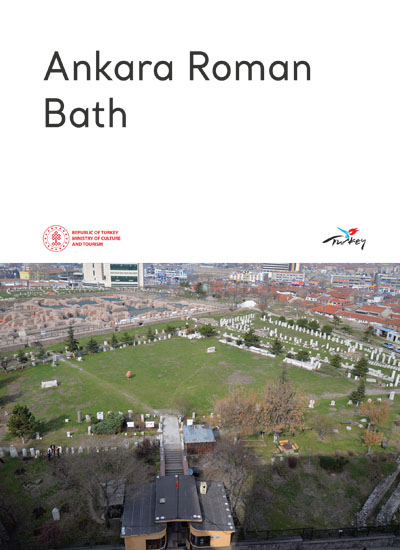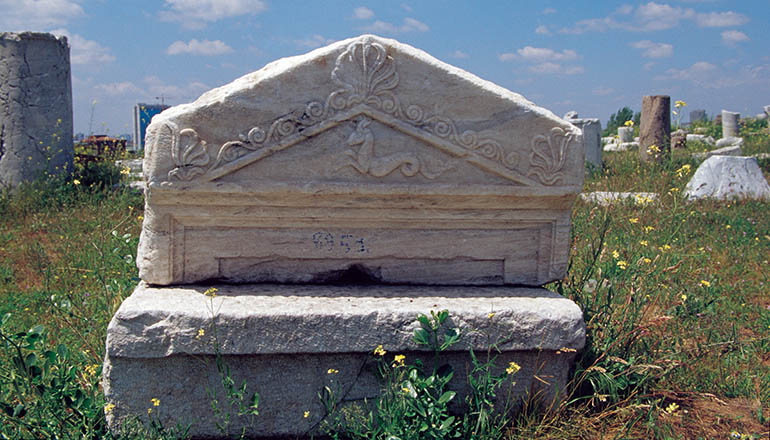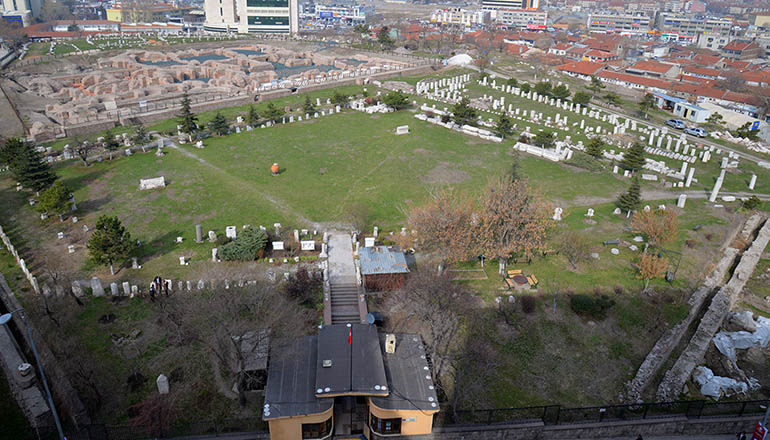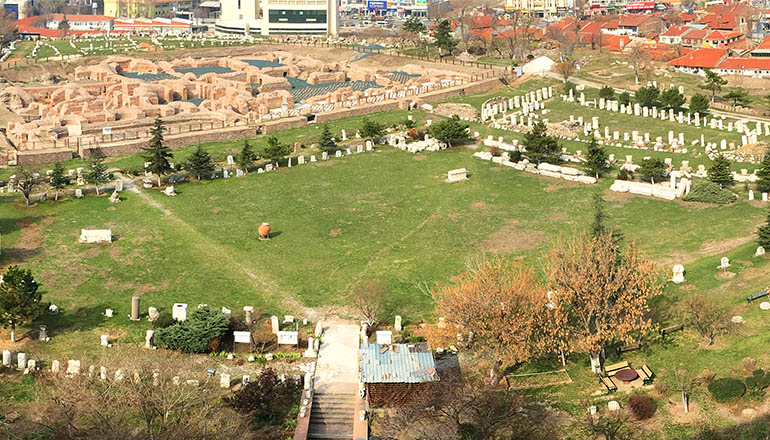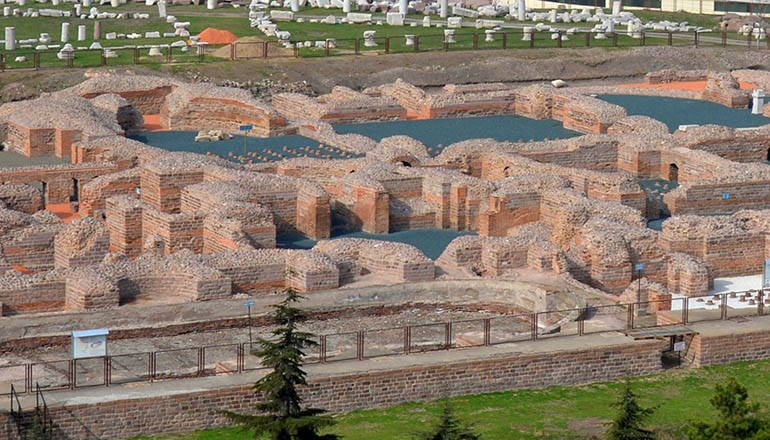The ruins of the Roman Baths in Ankara cover an area of approximately 65,000 m2. Through the works carried out between 1997 and 2001, they have taken on the appearance of an open-air museum. Approximately 1000 stone works in the ruins have been divided into three main groups as tomb steles, tablets and architectural pieces. In the southern wing of the Palaestra, the tomb steles are exhibited, mostly from the Roman and Byzantine periods. In the northern wing there are blocks with inscriptions, postaments and water pipes. Altars and other architectural works are displayed in the eastern wing and sarcophagi and lion sculptures in the central section. The Columned Road The Columned Road was discovered during the construction of Çankırı Avenue in the early years of the Turkish Republic. The columned street is partially located to the east of the Baths and the Palaestra. It leads to the Temple of Augustus, the holy place of the ancient city of Ancyra. The road was built around the 3rd century AD and was made up of marble columns with Corinthian heads. The Bath Building The director of the excavations dated the bath to the reign of Caracalla (212-217 AD) on the basis of coins found during the excavations. This is confirmed by several inscriptions by Tiberius Julius Justus Julianus, who was responsible for the construction of the bath and one of the leading figures of the ancient city. Other coins found during the excavations indicate that the bath was in continuous use for about 500 years and was repaired from time to time.
ROMAN BATHS AND OPEN AIR MUSEUM
